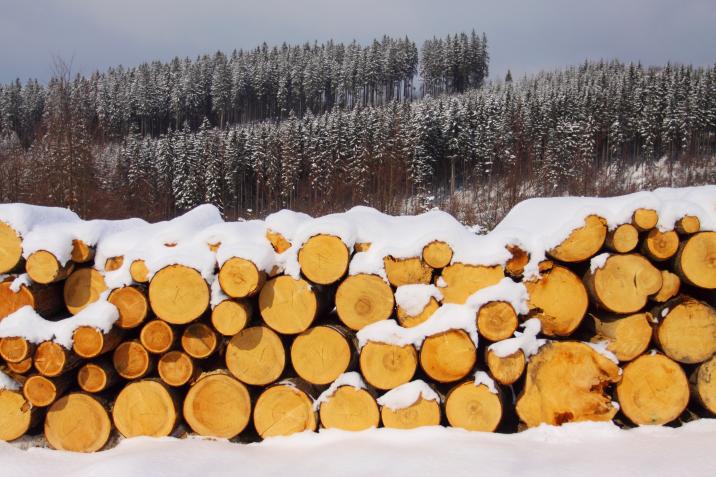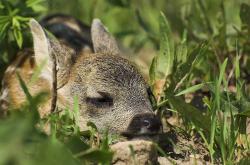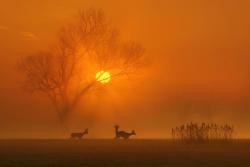 Asset Publisher
Asset Publisher
Surowiec do wszystkiego
W erze szkła, aluminium i krzemu można by odnieść wrażenie, że drewno jest passé. Nic bardziej mylnego! Gdziekolwiek się znajdziemy, na pewno wokół nas będzie wiele przedmiotów, które nie powstałyby bez użycia drewna.
Szacuje się, że współcześnie ma ono ok. 30 tys. zastosowań: drewno i materiały drewnopochodne są wykorzystywane m.in. w budownictwie, górnictwie, energetyce, do produkcji maszyn rolniczych i przemysłowych, podłóg, mebli, płyt, papieru i opakowań, narzędzi, instrumentów muzycznych, sprzętu sportowego, zabawek czy materiałów biurowych.
Szacuje się, że współcześnie drewno ma ok. 30 tys. zastosowań
Pochodzenie, sposób pozyskania i właściwości fizyczne drewna sprawiają, że jest najbardziej naturalnym i przyjaznym materiałem, który wykorzystujemy na tak wielką skalę. Jest niezbędnym elementem modnego dziś życia w stylu „eko", w harmonii z naturą i w zdrowiu. W obliczu zmian klimatycznych ważne jest też to, że nie tylko żywe drzewa wiążą znaczne ilości dwutlenku węgla. Wielkim magazynem CO2 są również produkty z drewna.
Im bardziej rozwinięta i nowoczesna gospodarka, tym więcej drewna potrzebuje. W ciągu ostatnich dwóch dekad zużycie drewna w naszym kraju wzrosło aż dwuipółkrotnie. W 1990 r. Polak przeciętnie zużywał rocznie równowartość 0,4 m sześc. drewna okrągłego, a obecnie – ponad 1 m sześc. Można się spodziewać, że ten wskaźnik jeszcze bardziej wzrośnie – do wartości podobnych jak w innych krajach europejskich (Niemiec zużywa rocznie średnio 1,7 m sześc. drewna, Czech – prawie 1,5 m sześc., Włoch– 1,1 m sześc.).
Dowiedz się więcej o drewnie z książki „Naturalnie, drewno!" (PDF)
 Asset Publisher
Asset Publisher
 Asset Publisher
Asset Publisher
HUNTING
HUNTING
The areas of the Forest District Świebodzin, concerning hunting, belong to II Hunting Region. Within this area in 8 hunting districts, there manages 5 hunting associations and the Pedigree Breeding Establishment (OHZ). The hunting district 104 operates in the area of 9560 ha, including 5510 ha of the forests, while the hunting district 114 operates in the total area of 7280 ha, including 4345 ha of the forests.
The state of the hunting game within the area of the Forest District Świebodzin during the hunting period 2013/2014 presented as follows:
- 678h head of stags including 262 head of harts,
- 1941 head of deer including 696 head of cuckold,
- 1014 head of wild boars,
- 144 head of fallow deer including 57 head of harts.
Within the area of the Pedigree Breeding Establishment (OHZ) in the hunting district 114, there is a cold storage to keep hunted game, which is used by two hunting districts.
The Forest District Świebodzin, undertaking actions to the benefit of adverse tendencies in the quantity of European hares and grey partridges, in 2004, established the net – cage farms of hares within the area of the Pedigree Breeding Establishment (OHZ) of the State Forests. In 2005, there started the aviary breeding of grey partridges. The aim of the animal breeding is to breed appropriate number of European hares and grey partridges accustomed to live in natural conditions and to restore their species through their re – introduction in the areas of the proper site conditions for the above mentioned species.
In 2015, in the Forest District Świebodzin, there reopened the Closed Fallow Deer Breeding Farm. The aim of this undertaking is re - introduction and strengthening the gene pool of this species within the whole west belt of the country controlled by the State Forests.






 Lis.jpg
Lis.jpg
 Sarenka.jpg
Sarenka.jpg
 Łowiectwo, fot. Jerzy Malicki
Łowiectwo, fot. Jerzy Malicki



